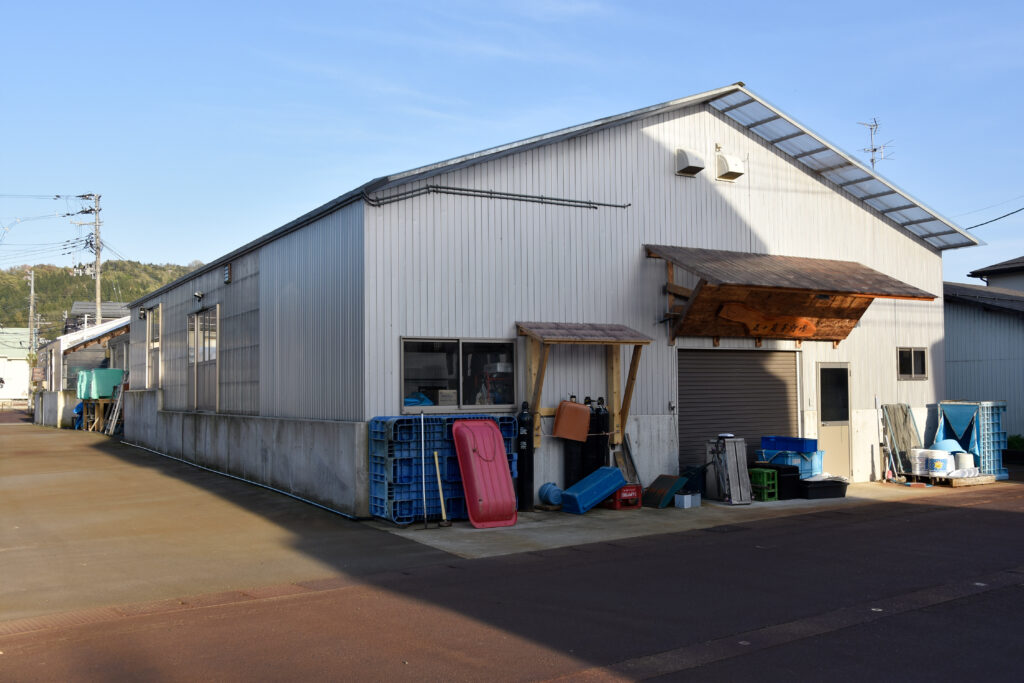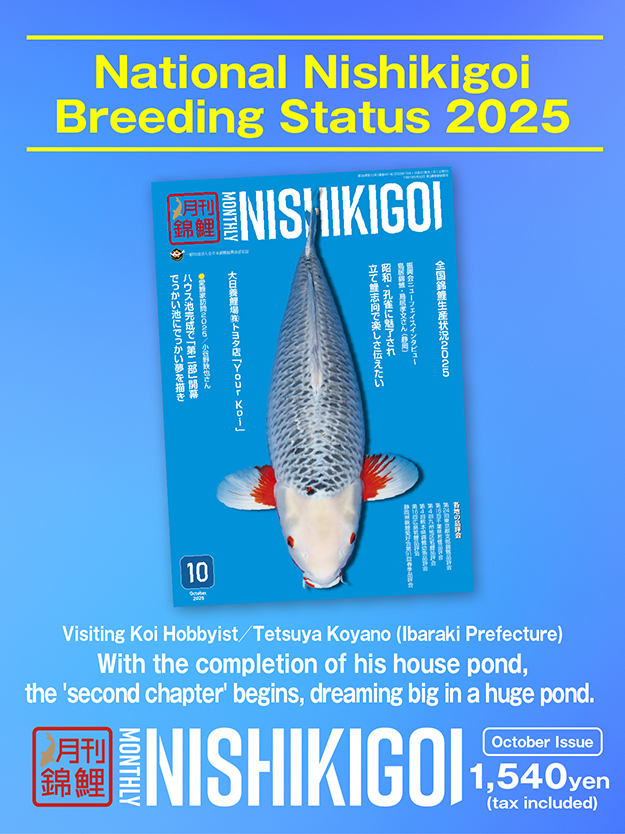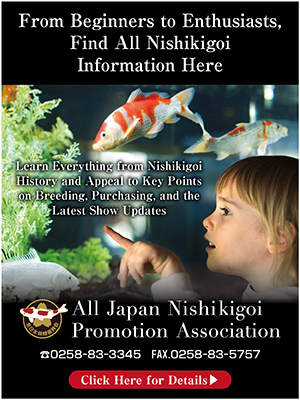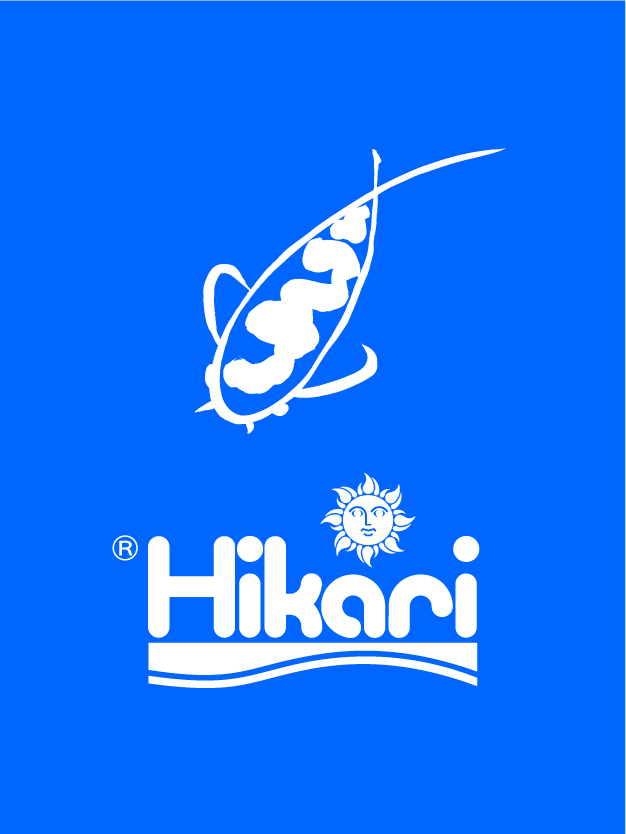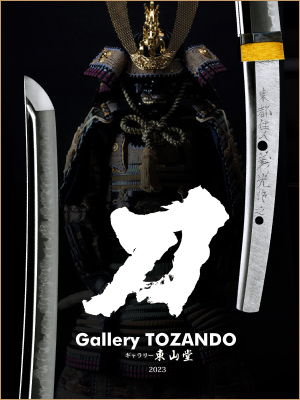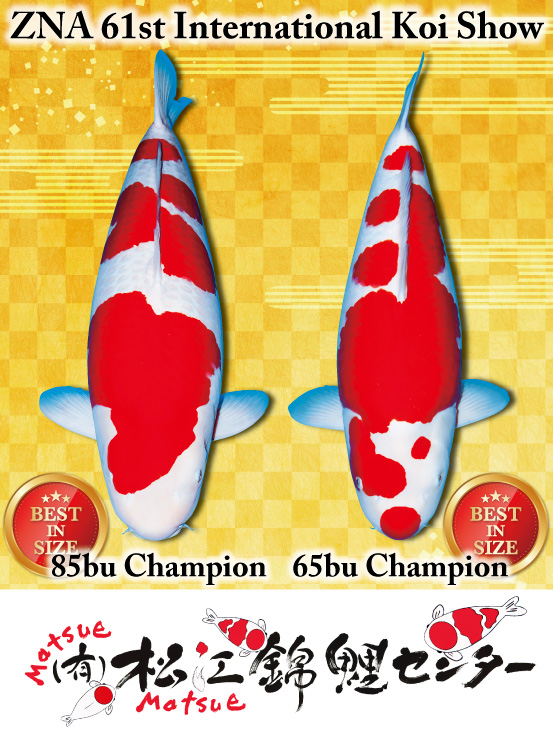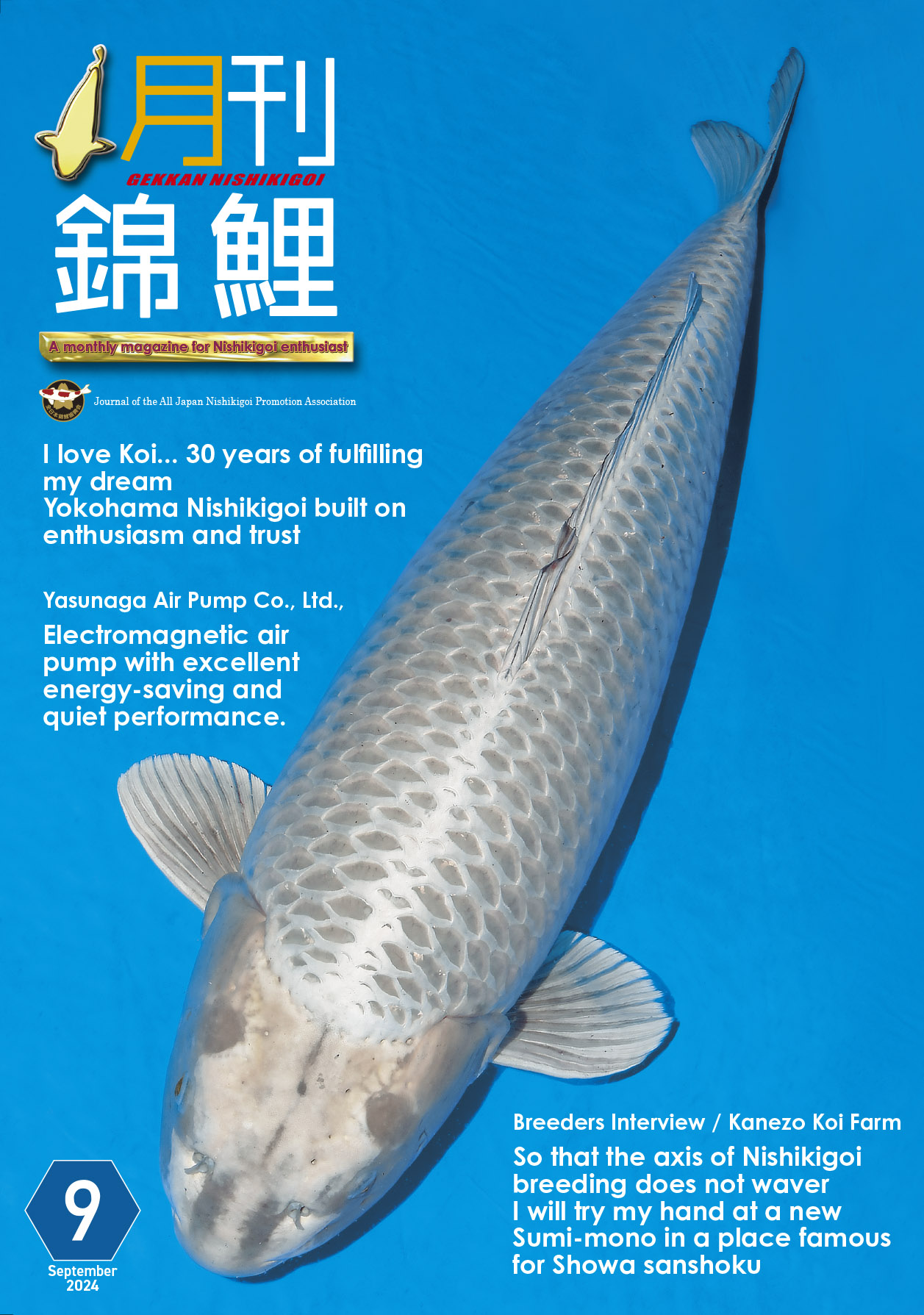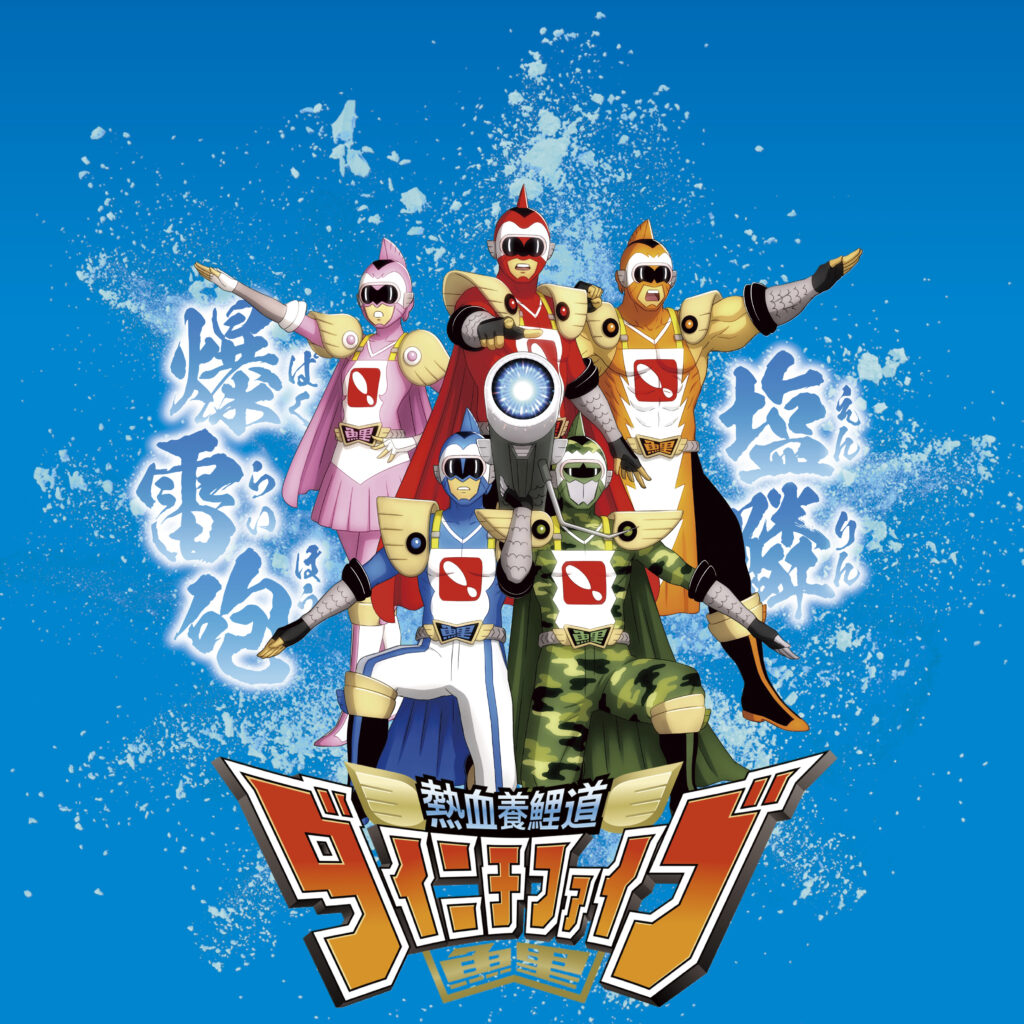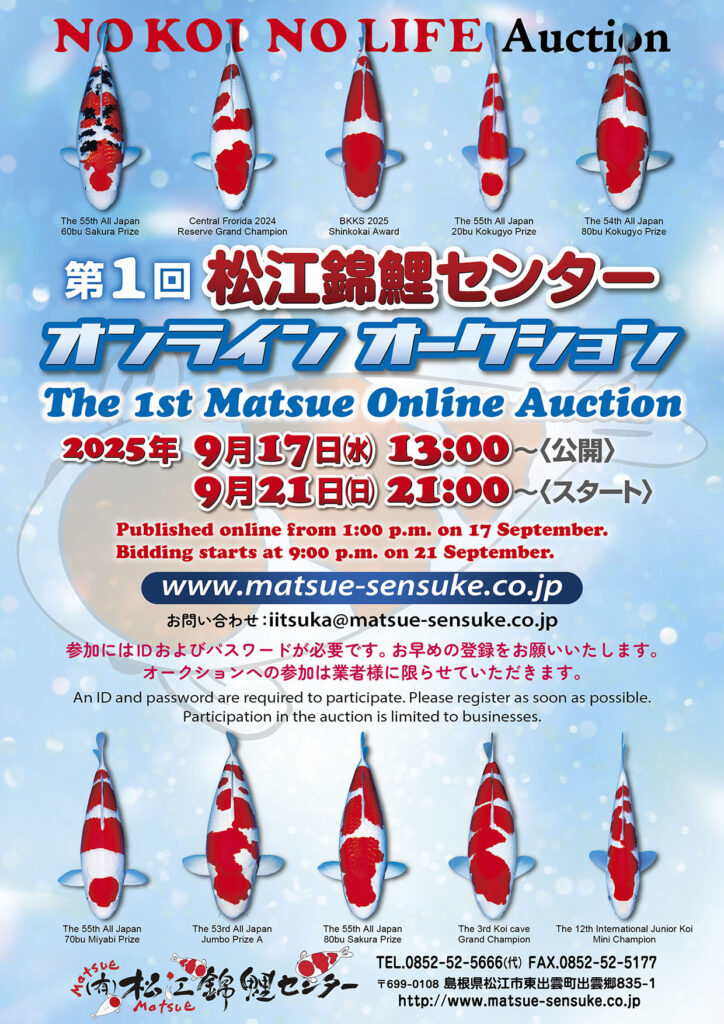Interview with Toshinobu Ikarashi from Ikarashi koi farm
Creating various types with solid and patterned designs.
— When combining parents, do you find that if both have aragoke, the scales stand out too much?
Ikarashi: If I want to create Aragokegoi purely, it’s okay to do so, and occasionally, I also make such combinations. However, in the case of ginrin, if both have aragoke, it becomes difficult to fix the silver scales at the shoulder area, so the silver tends to appear less. So, when I wanted to emphasize grin, I crossed a beautiful koi with scales with clear silver, with aragoke, or sometimes a Doitsugoi.
— Are there any changes in the arrangement of Aragoke due to growth?
Ikarashi: It hardly changes. The placement is almost fixed. When you closely observe during the primary selection, you can generally see the scales well, so if a koi has missing scales along the lateral line, they will still be missing as it grows. Scales do not emerge up later. So, at that time, I could understand the type of scales, whether large scales appeared, whether they lined up well from the shoulder area, or whether smaller scales were scattered over.
— Even though we refer to them as aragoke, I believe there are variations depending on the combination of parent koi, correct?
Ikarashi: Yes, significantly. Ideally, I want to bring out aragoke at the shoulder area prominently and firmly emphasize the silver, but depending on the combination, it may only come out sometimes. Even if aragoke do appear, they may be what we commonly call poorly arranged aragoke, or the large scales may be clustered together. So, achieving beautiful and large scales is difficult when creating them. No matter how much crossbreeding I do, the desired traits only emerge when the combinations between varieties match. That’s why I’ve been experimenting with various combinations for about three years. As I’ve improved my understanding of scales, they’ve emerged according to my expectations by selecting varieties accordingly and crossbreeding. So, to some extent, it’s possible to create them intentionally.
— In the future, will you also expand to include types other than the Godzilla or Ochiba lineage?
Ikarashi: It’s essential to have a variety of colour combinations. Just because Godzilla is popular doesn’t mean I should focus only on it. So, I’m working on producing various colours while incorporating different bloodlines. Especially for tosai mixes, it’s crucial to achieve a balanced colour scheme to create an overall appealing impression and attract buyers.
An Aragokekoi with a diverse range of colouration and scale patterns.

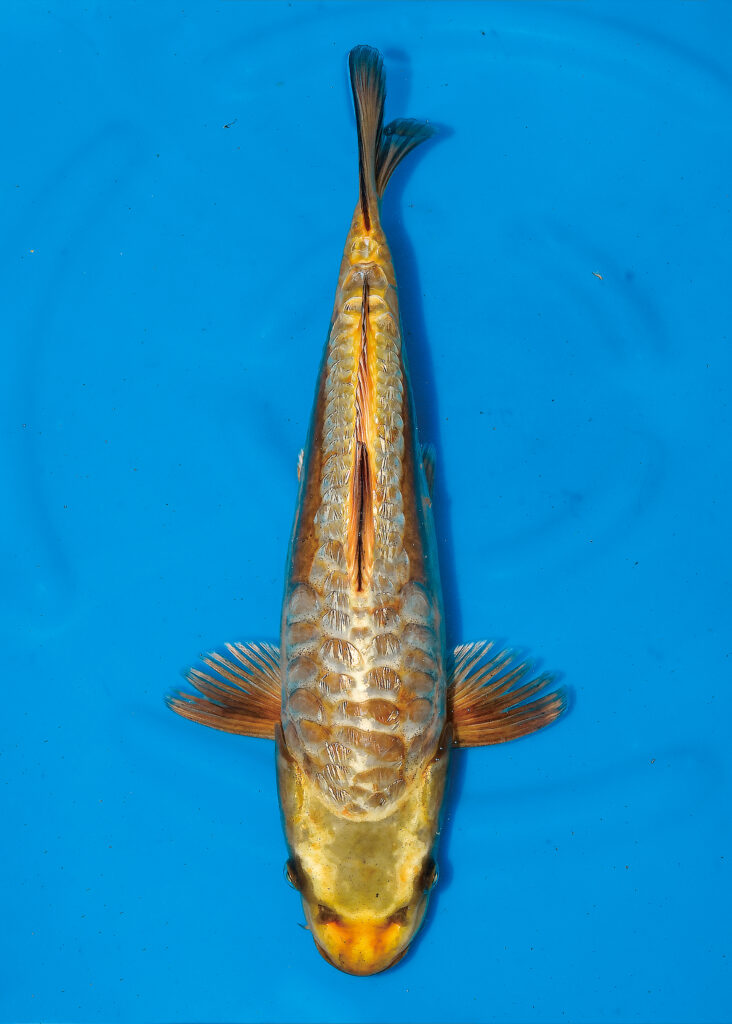

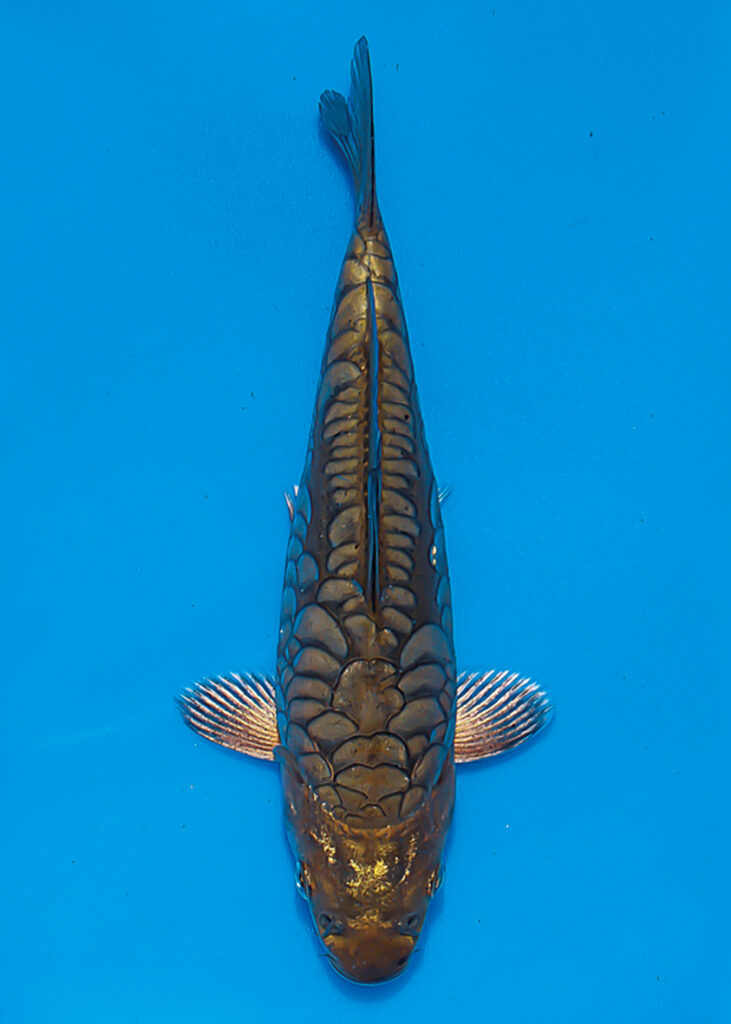
— Mujimono highlights aragoke well, but how do they pair with patterns?
Ikarashi: large scales can be obstructive when it comes to patterns like Hariwake or DoitsuKujyaku on plain ones. So, when I think about balancing patterns and scales, I want to get Syusui, which has onigoke with silver or Matsuba, which has black scales that concentrate on the shoulder. These scales do not interfere with the pattern, so making such distinctions is essential.
Currently, there are roughly two types of bloodlines in terms of silver scales. One type revolves around the Godzilla bloodline, where silver is prominently displayed throughout the body. The other type consists of lineages where silver is predominantly found only on the back.
— Doitsugoi can be divided into “Kawagoi” with few scales and “Kagamigoi” with large scales. Do you use both types in crossbreeding?
Ikarashi: It’s just my opinion, but while Kawagoi may seem better according to the standards of the Koi Show, when I look at the body, they tend to be inferior or absolutely sag in the belly and don’t grow big.
— It is often noted that Doitsugoi are susceptible to changes in body shape.
Ikarashi: For example, even if you cross one metre female Kawagoi with an 80cm male Kawagoi, the offspring won’t necessarily be larger than the parents. So, when considering what enlarged them, I remember Konishi’s (Konishi Koi Farm) Doitsu crossbreeds, which always have scales along the lateral line or on the shoulders. I think that’s probably the factor that contributes to their growth. With scales present, they support the bones and body, similar to armour, so they grow larger.
— I see, that’s interesting!
Ikarashi: Perhaps Kawagoi that have grown large are offspring of a koi with scales and Doitsugoi, which, even though they don’t have scales, due to remnants of their scaled ancestors, grow larger. When the genes for Kawagoi become firmly established, they don’t grow large. Doitsugoi was initially introduced to the Nishikigoi because they were known to have good appetites and grow large. However, nowadays, it’s completely the opposite. It is said that Doitsugoi don’t grow large. Of course, Kawagoi is generally considered more beautiful, so everyone tends to inbreed. I think it’s more important to focus on scales rather than worrying about inbreeding issues.
— I think the fixation of varieties and inbreeding are inseparable relationships.
Ikarashi: Yes, that’s correct. If I feel satisfied with adding variations and bloodlines and believe it’s good enough as a variety, then I proceed with the fixation process. But I’m currently exploring which colourations emerge most efficiently and which ones are best as products. Once I have a clearer picture of the fixation in that aspect, I’ll probably proceed with the fixation through crossbreeding among the already developed ones. On the other hand, the ginrin bloodline is an indispensable aspect, but it leads to slight inbreeding. So, I want to figure out how to mix and dilute it gradually while blending it.
— I look forward to further improving aragoke and expanding its variations, expecting its excellent performance in the Koi Show.
Ikarashi: It would be interesting to have many customers who appreciate the beauty of scales and Fukurin. As a breeder, it’s crucial for me to figure out how to stabilize unique variations of koi. So, when someone says they want a particular koi that isn’t available, I’d like to be able to offer them alternatives like, “Well, I don’t have that one, but I do have this.” I want to have a variety of koi to accommodate a range of customers and preferences.
(To be continued in the part 2.)
